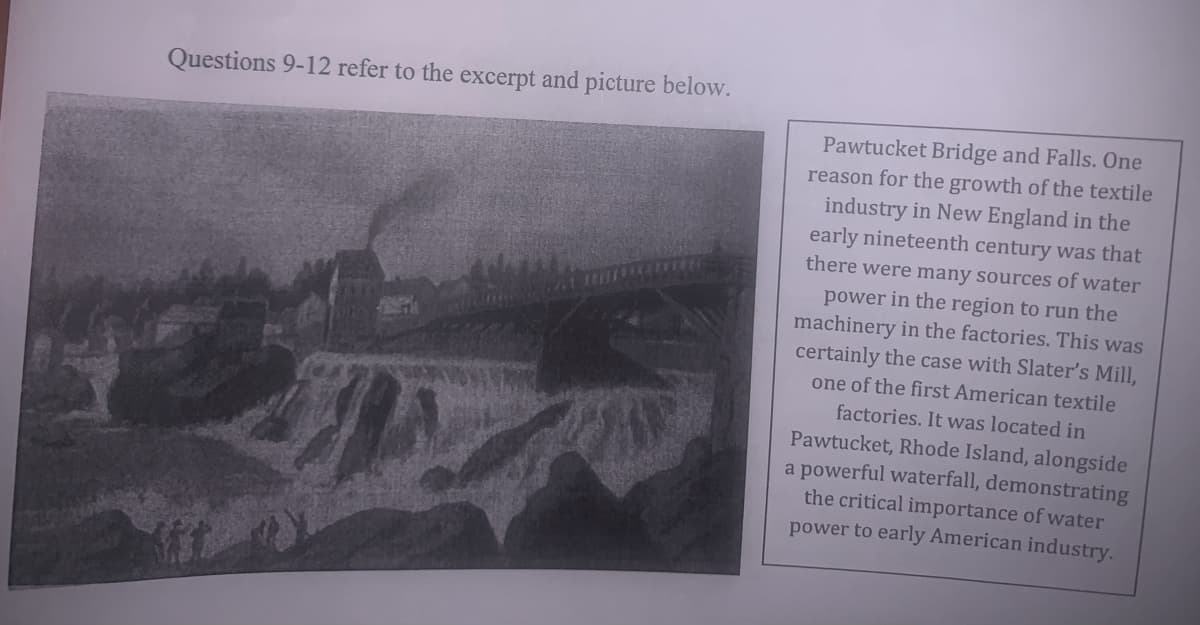he economic development illustrated in the painting promote national economic ties in the early 19th century? a. The increased demand for cotton led the North to embrace the slave trade. b. Southern cotton provided the raw material for the growing textile factories in the North с. The southern states began to industrialize rapidly, along with the North d. The North and South became more culturally unified in their competition with the British textile industry
he economic development illustrated in the painting promote national economic ties in the early 19th century? a. The increased demand for cotton led the North to embrace the slave trade. b. Southern cotton provided the raw material for the growing textile factories in the North с. The southern states began to industrialize rapidly, along with the North d. The North and South became more culturally unified in their competition with the British textile industry
Related questions
Question

Transcribed Image Text:10. How did the economic development illustrated in the painting promote national economic ties in
the early 19th century?
a. The increased demand for cotton led the North to embrace the slave trade.
b. Southern cotton provided the raw material for the growing textile factories in the North
The southern states began to industrialize rapidly, along with the North
d. The North and South became more culturally unified in their competition with the British textile industry
c.

Transcribed Image Text:Questions 9-12 refer to the excerpt and picture below.
Pawtucket Bridge and Falls. One
reason for the growth of the textile
industry in New England in the
early nineteenth century was that
there were many sources of water
power in the region to run the
machinery in the factories. This was
certainly the case with Slater's Mill,
one of the first American textile
factories. It was located in
Pawtucket, Rhode Island, alongside
a powerful waterfall, demonstrating
the critical importance of water
power to early American industry.
Expert Solution
This question has been solved!
Explore an expertly crafted, step-by-step solution for a thorough understanding of key concepts.
This is a popular solution!
Trending now
This is a popular solution!
Step by step
Solved in 2 steps
